(if it does not open automatically, check the bottom of your screen for a file-name to click).
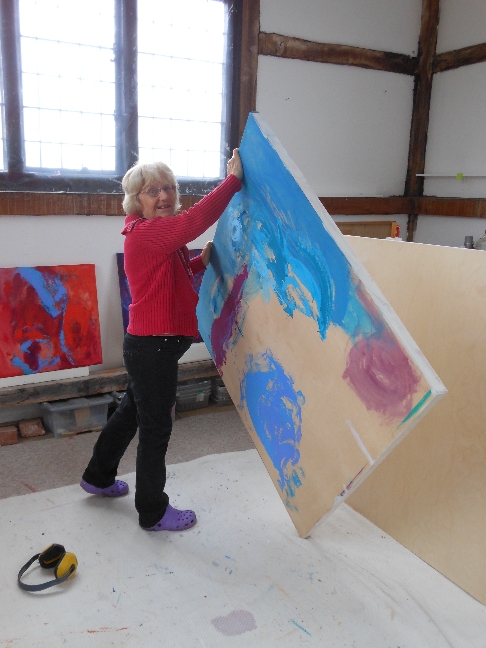
I work on several paintings at once, all in various stages. What is often difficult for people to comprehend is that when I start a painting, I have nothing in my mind of what it is going to look like.
Some of my paintings can take many months, even years to complete – whereas others form fairly quickly, but still take several weeks. I can never tell which will be quick and which will take longer.
I paint on bare, untreated birch ply board, as I love the texture and grain. It comes in large (2.4 x 1.2 metres) sheets 50 mm thick, and for large works, I batten the board for stability. For many years
I did all the carpentry myself, but recently I have started to get them made-up for me as the larger work needed to include extra battens to prevent warping, and I want to spend my
time painting ... not doing woodwork!
Throughout history there have been many artists using boards and priming them in different ways. Back in the 13th century a plank of poplar was worked over and over before many layers of Gesso were applied by
studio assistants, before the artist even came to work on it. More recently Vermeer used butcher’s blocks, Howard Hodgkin used old breadboards and Gillian Ayres used antique round-top tables. I don’t prime my board, as
I like to use the grain of the wood in my work. However, I am aware that I need to make it durable, so I always make sure that any bare or thin paint parts are glazed with a matt or satin glaze to finish.
Paint & applicators
I use acrylic paints of several different makes, as they all have different properties and give different results. I build up the layers with a mixture of opaque, translucent and transparent paint, working across the board in a
rhythm and in a seemingly random way. There’s a lot of experimentation to see what paint and tools work with the marks that are already there. I test out ideas for colour and shapes by tacking coloured paper to the picture, and
use a wide range of tools, from traditional paintbrushes, to fish slices, knives, my hands and anything else I feel appropriate. My sander is one of my most important tools, as I can use it to sand back through parts of a painting
to expose the different layers.
When a painting no longer talks to me, I turn it to the wall for a while (days, weeks or months), and then when I turn it back it will let me know if it's finished.
"When I do a 'top mark', which is often a big defining mark, I need to practice first .... so I use bare or nearly
bare boards. By this means one painting 'gives birth' to another painting."
"I try to get my marks 'spontaneous', but sometimes have to work at 'refining my spontaneity'!"
"Every day I write. It helps me consilidate my thinking about a painting:
the inspiration behind it, the shape, the form, all the marks, how it talks to me. I think it's a habit I picked up from my father and uncle, who both wrote extensively."
Images of work in progress ....
"Vibrato"
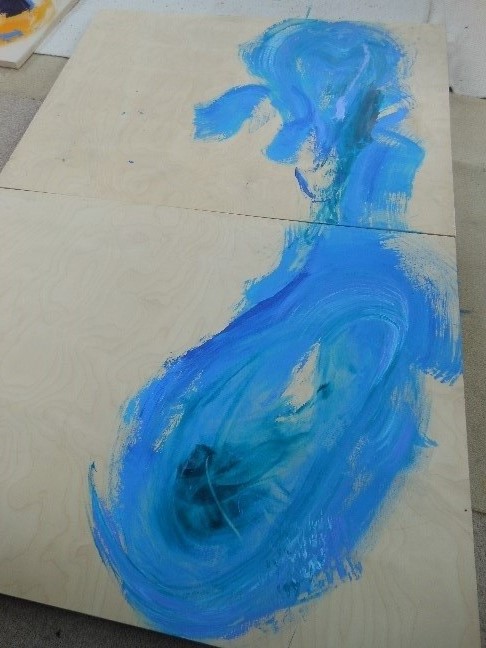 "Vibrato" (top of picture) and "Move Two" started together.
"Vibrato" (top of picture) and "Move Two" started together.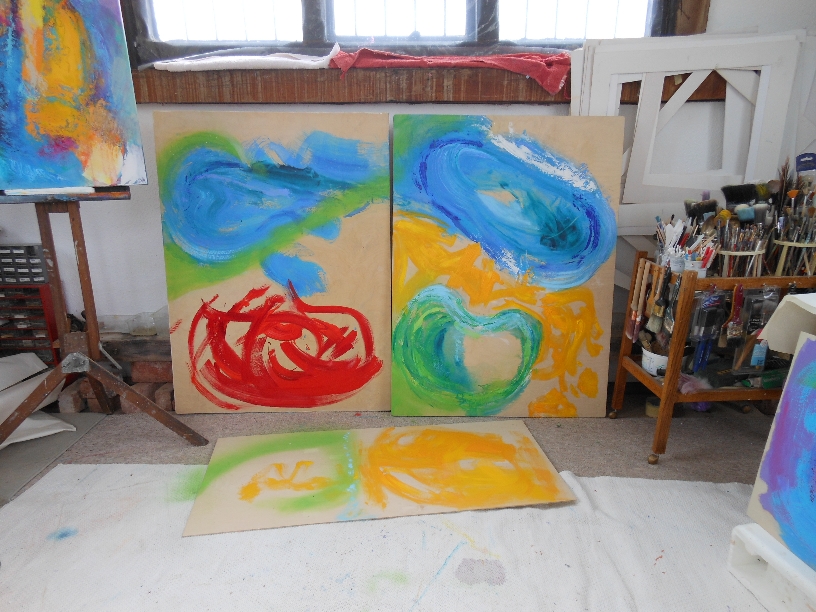 "Vibrato" and "Move Two" developing together ....
"Vibrato" and "Move Two" developing together ....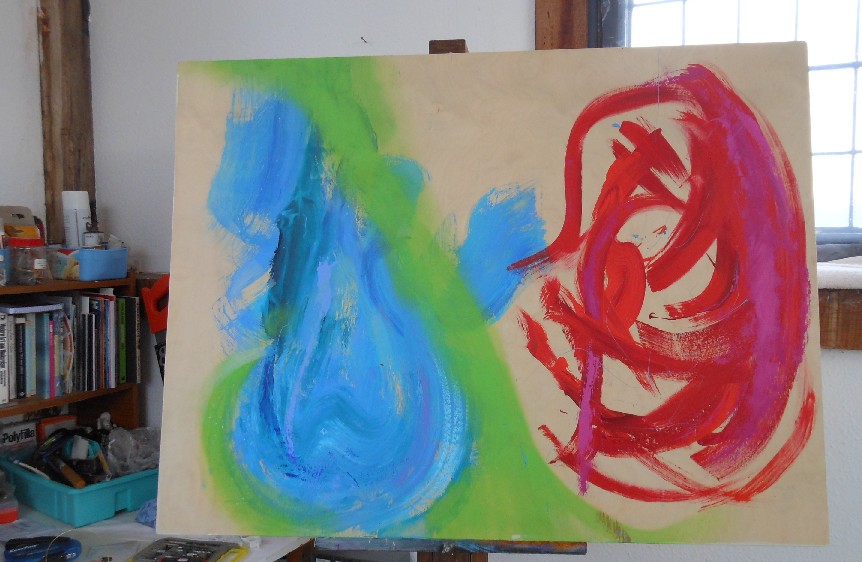 "Vibrato" on its own ....
"Vibrato" on its own ....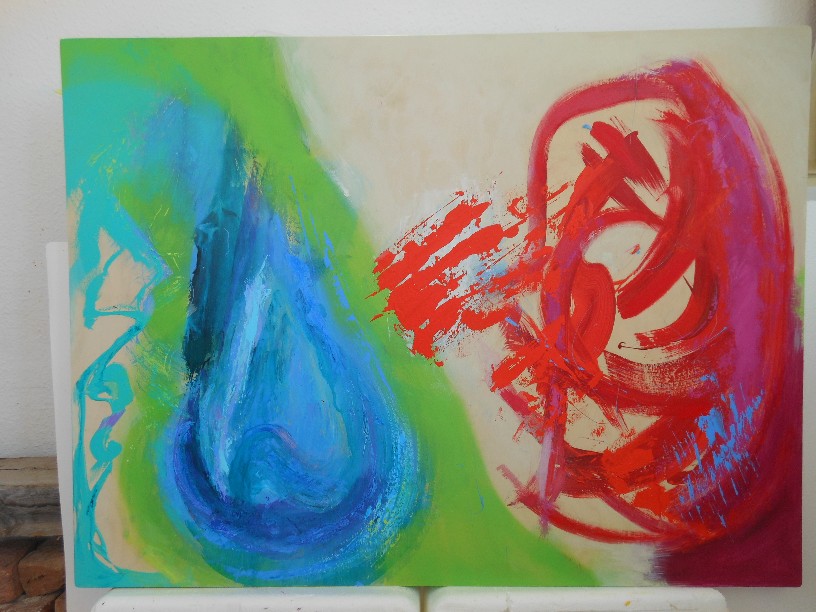
 ....and finished
....and finished"Red & Green Should Not Be Seen"


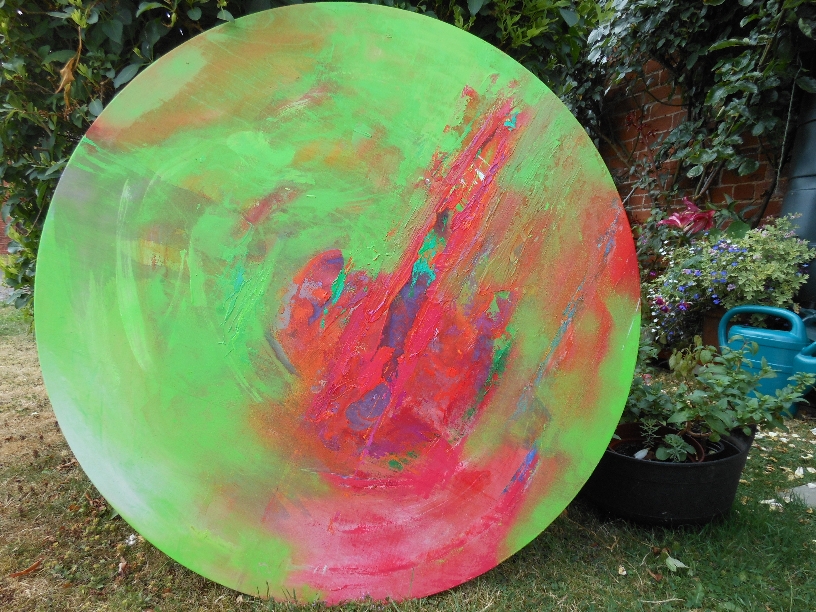
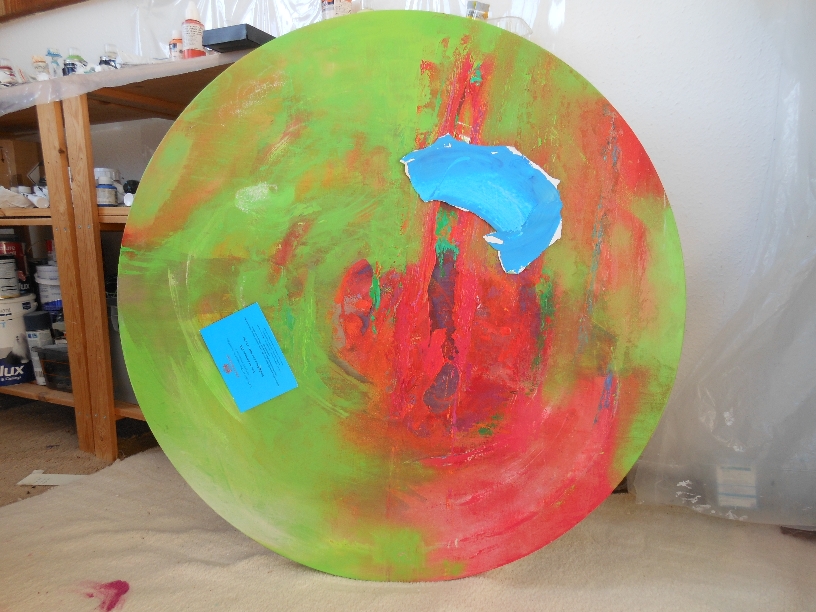 I often test colour ideas by sticking scraps to the painting...
I often test colour ideas by sticking scraps to the painting...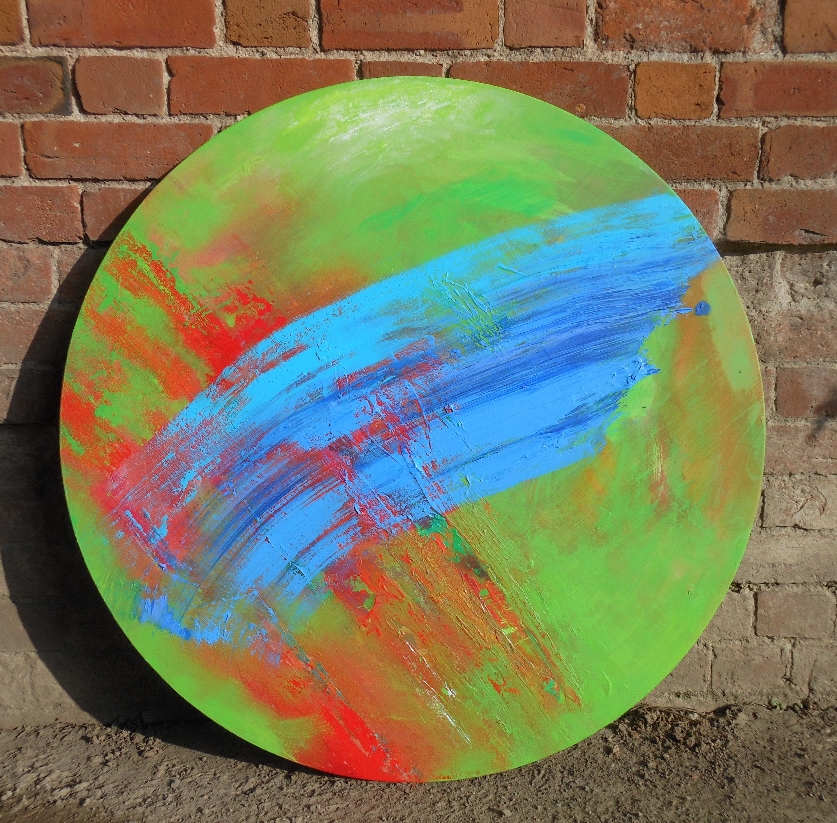 The finished painting.
The finished painting.